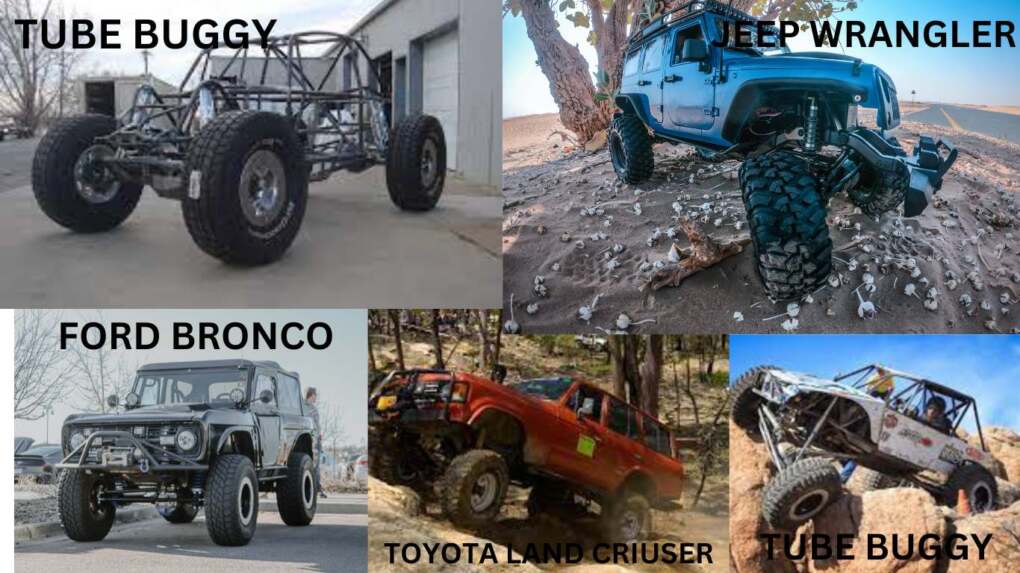The thrilling off-road racing of “rock bouncing” involves driving highly modified 4×4 vehicles up extremally rocky, steep slopes. The appeal of this heart-pounding activity has grown in recent years as more off-road enthusiasts decide to take on the challenge. If you want to start rock-bouncing, it’s crucial to understand what kind of vehicle is best for the challenge, what safety equipment you’ll need, as well as some important strategies and techniques to make your experience exciting and safe.

Types of Rock-Bouncing vehicles:
You need a vehicle made for severe off-roading when it comes to rock-bouncing. Your rig needs to have a strong frame, good ground clearance, and a powerful motor to manage the demands of the sport. Many different kinds of vehicles, such as the following, are frequently used for rock bouncing:
The most common of vehicles is the tube Buggy. It frequently has a tube chassis, sizable off-road tires, and a powerful engine. Rock bouncer buggies are capable of tackling the toughest terrain and can climb steep hills with ease.
Jeep Wrangler: Because of its off-road abilities and aftermarket support, the Jeep Wrangler is a well-liked vehicle for rock bouncing. Most of the difficulties presented by rock bouncing can be overcome by a modified Jeep Wrangler.
Toyota Land Cruiser: Another well-liked option for rock-bouncing is the Land Cruiser, particularly in areas with a lot of rocks and boulders. The Land Cruiser is a fantastic option for this sport thanks to its tough construction and off-road prowess.
The older Ford Bronco: For many years, off-road enthusiasts have favored the Ford Bronco. A modified Bronco can traverse almost any surface, even rough, steep slopes.

Equipment:
You’ll need a few key pieces of gear before you can begin rock-bouncing. Here’s a list of some of the equipment you’ll need:
Winch: A winch is necessary for rock-bouncing because it can rescue you from precarious circumstances. When selecting a winch, make sure it has a large pulling capacity because you might need to pull your car up a steep incline.
Roll cage: Because it offers protection in the event of a rollover, a roll cage is essential for rock-bouncing safety. Make sure the roll cage you select is designed to withstand the challenges of off-road driving.
Off-road tires are essential for rock bouncing because they give the traction needed to climb steep hills and negotiate rocky terrain.
A good suspension system is necessary for rock-bouncing because it can smooth out the shocks and jolts of unpaved roads. Make sure to choose a suspension system that’s designed for extreme off-roading.
Safety gear for rock bouncing
Safety should always be a top priority when rock-bouncing. Some of the safety equipment you’ll need is listed below:
A helmet is definitely essential to safeguard your head in the case of a crash or other incident.
A safety harness will keep you securely placed in your vehicle during off-road movements.
The quickest way to put out any flames that could start inside of your vehicle is with a fire extinguisher.
Important tips and techniques:
Rock-bouncing is a challenging sport that requires skill and knowledge. Following are some essential tips and techniques to remember:
Start out simple if you’re new to rock bouncing and work your way up to the bigger obstacles that are more difficult.
Before trying any challenging trails, be sure you are aware of the capabilities and limits of your vehicle.
Picking your line: Spend some time picking your line carefully as you near the obstacle. Avoid any big rocks or other obstructions and seek out the route that offers the least amount of challenges.
Rock bouncing relies on momentum. Utilize the speed and momentum of your vehicle to climb hills and negotiate difficult trails.